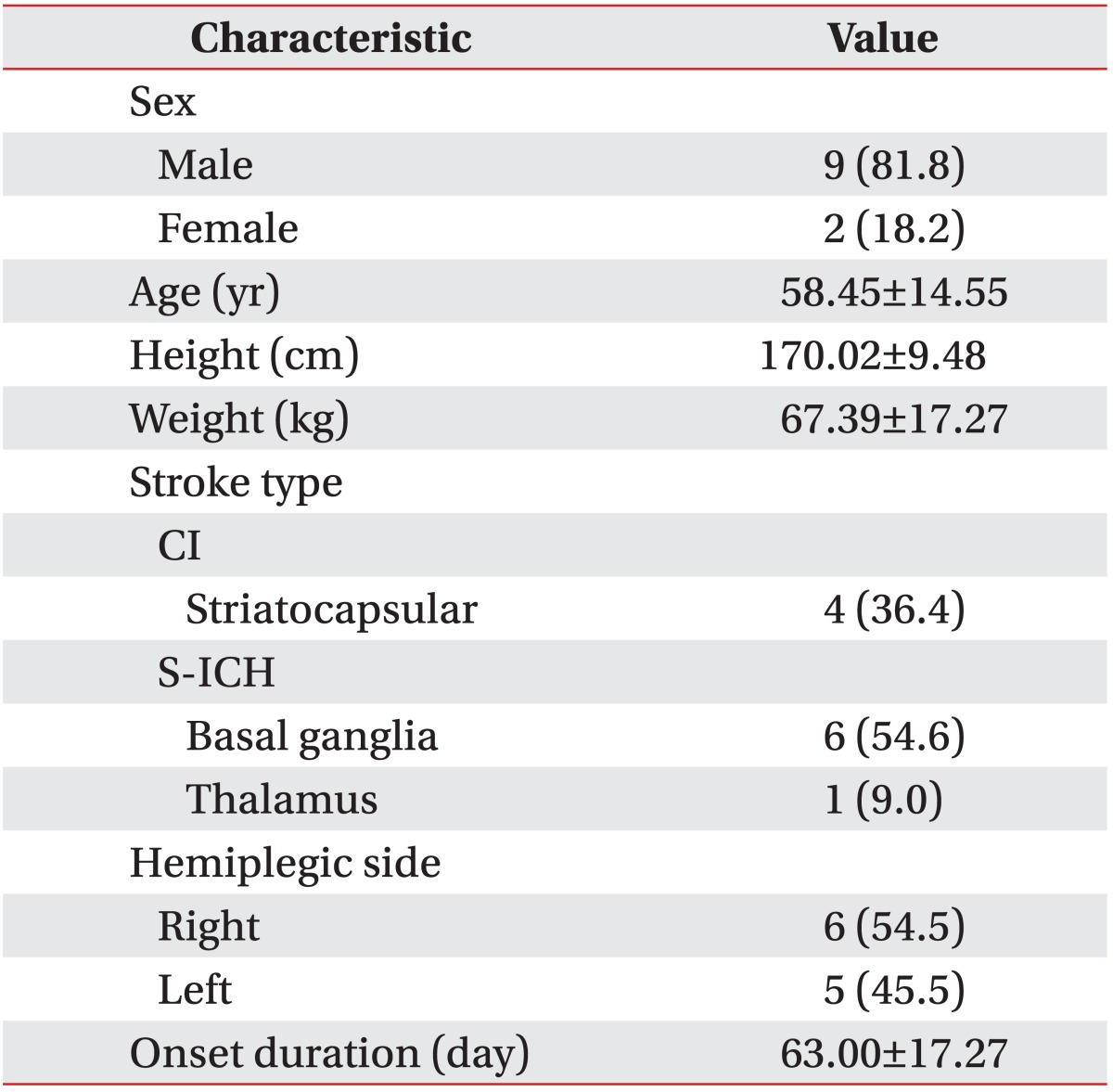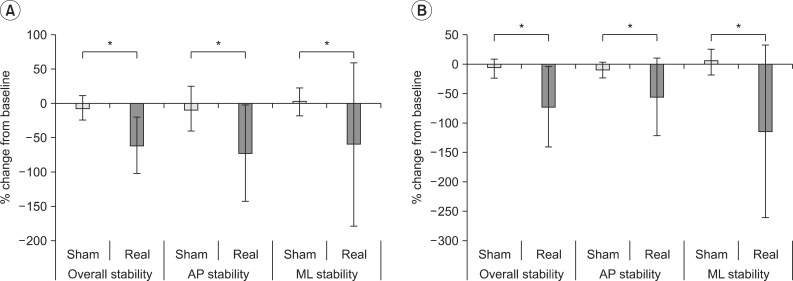1. Kolominsky-Rabas PL, Weber M, Gefeller O, Neundoerfer B, Heuschmann PU. Epidemiology of ischemic stroke subtypes according to TOAST criteria: incidence, recurrence, and long-term survival in ischemic stroke subtypes: a population-based study. Stroke. 2001; 32:2735–2740. PMID:
11739965.
2. Hankey GJ, Jamrozik K, Broadhurst RJ, Forbes S, Anderson CS. Long-term disability after first-ever stroke and related prognostic factors in the Perth Community Stroke Study, 1989-1990. Stroke. 2002; 33:1034–1040. PMID:
11935057.

3. Johansson BB. Current trends in stroke rehabilitation: a review with focus on brain plasticity. Acta Neurol Scand. 2011; 123:147–159. PMID:
20726844.

4. Geurts AC, de Haart M, van Nes IJ, Duysens J. A review of standing balance recovery from stroke. Gait Posture. 2005; 22:267–281. PMID:
16214666.

5. Rubenstein LZ, Josephson KR. The epidemiology of falls and syncope. Clin Geriatr Med. 2002; 18:141–158. PMID:
12180240.

6. Tinetti ME, Williams CS. The effect of falls and fall injuries on functioning in community-dwelling older persons. J Gerontol A Biol Sci Med Sci. 1998; 53:M112–M119. PMID:
9520917.

7. Nitsche MA, Boggio PS, Fregni F, Pascual-Leone A. Treatment of depression with transcranial direct current stimulation (tDCS): a review. Exp Neurol. 2009; 219:14–19. PMID:
19348793.

8. Nitsche MA, Paulus W. Excitability changes induced in the human motor cortex by weak transcranial direct current stimulation. J Physiol. 2000; 527(Pt 3):633–639. PMID:
10990547.

9. Hummel F, Celnik P, Giraux P, Floel A, Wu WH, Gerloff C, et al. Effects of non-invasive cortical stimulation on skilled motor function in chronic stroke. Brain. 2005; 128(Pt 3):490–499. PMID:
15634731.

10. Kim DY, Park CI, Jung KJ, Ohn SH, Park KD, Park JB, et al. Improvement of chronic post-stroke hemiparetic upper limb function after 2 week trascranial direct current stimulation. J Korean Acad Rehabil Med. 2009; 33:5–11.
11. Jeffery DT, Norton JA, Roy FD, Gorassini MA. Effects of transcranial direct current stimulation on the excitability of the leg motor cortex. Exp Brain Res. 2007; 182:281–287. PMID:
17717651.

12. Tanaka S, Hanakawa T, Honda M, Watanabe K. Enhancement of pinch force in the lower leg by anodal transcranial direct current stimulation. Exp Brain Res. 2009; 196:459–465. PMID:
19479243.

13. Tanaka S, Takeda K, Otaka Y, Kita K, Osu R, Honda M, et al. Single session of transcranial direct current stimulation transiently increases knee extensor force in patients with hemiparetic stroke. Neurorehabil Neural Repair. 2011; 25:565–569. PMID:
21436391.

14. Fertonani A, Rosini S, Cotelli M, Rossini PM, Miniussi C. Naming facilitation induced by transcranial direct current stimulation. Behav Brain Res. 2010; 208:311–318. PMID:
19883697.

15. Kang EK, Paik NJ. Effect of a tDCS electrode montage on implicit motor sequence learning in healthy subjects. Exp Transl Stroke Med. 2011; 3:4. PMID:
21496317.

16. Madhavan S, Weber KA 2nd, Stinear JW. Non-invasive brain stimulation enhances fine motor control of the hemiparetic ankle: implications for rehabilitation. Exp Brain Res. 2011; 209:9–17. PMID:
21170708.

17. Aydog E, Depedibi R, Bal A, Eksioglu E, Unlu E, Cakci A. Dynamic postural balance in ankylosing spondylitis patients. Rheumatology (Oxford). 2006; 45:445–448. PMID:
16278280.
18. Lee H, Noh GB, Lee YH, Seong NJ, Lee HC. Effect of concentric isokinetic knee strength training on gait, balance and quality of life in chronic stroke patients. J Korean Acad Rehabil Med. 2007; 31:649–654.
19. Tomas-Carus P, Gusi N, Hakkinen A, Hakkinen K, Raimundo A, Ortega-Alonso A. Improvements of muscle strength predicted benefits in HRQOL and postural balance in women with fibromyalgia: an 8-month randomized controlled trial. Rheumatology (Oxford). 2009; 48:1147–1151. PMID:
19605373.

20. Fregni F, Boggio PS, Mansur CG, Wagner T, Ferreira MJ, Lima MC, et al. Transcranial direct current stimulation of the unaffected hemisphere in stroke patients. Neuroreport. 2005; 16:1551–1555. PMID:
16148743.

21. Jorgensen HS, Nakayama H, Raaschou HO, Olsen TS. Recovery of walking function in stroke patients: the Copenhagen Stroke Study. Arch Phys Med Rehabil. 1995; 76:27–32. PMID:
7811170.
22. Kim CR, Kim DY, Kim LS, Chun MH, Kim SJ, Park CH. Modulation of cortical activity after anodal transcranial direct current stimulation of the lower limb motor cortex: a functional MRI study. Brain Stimul. 2012; 5:462–467. PMID:
21962977.







 PDF
PDF ePub
ePub Citation
Citation Print
Print





 XML Download
XML Download